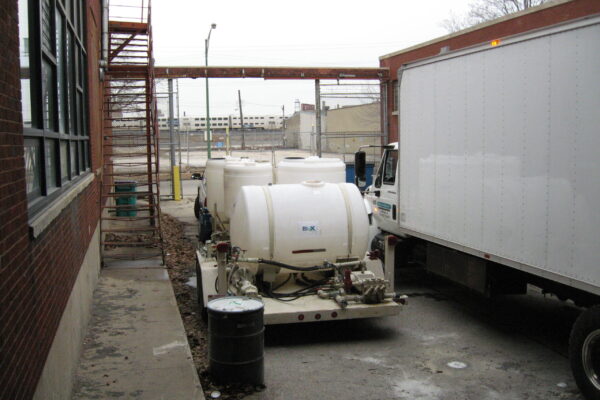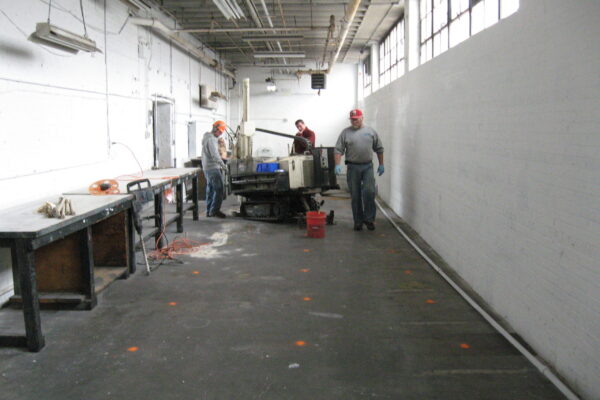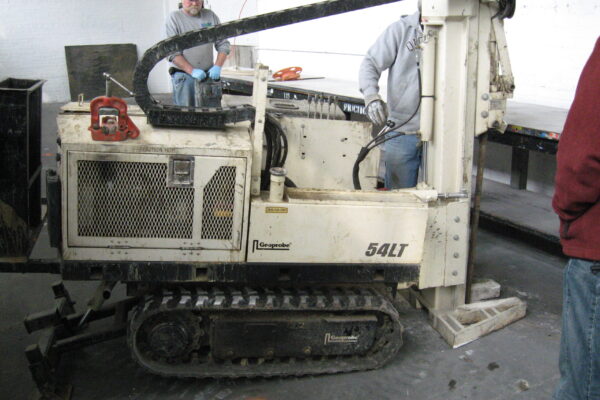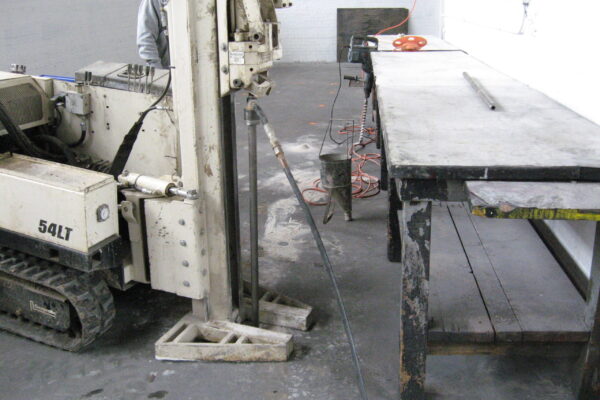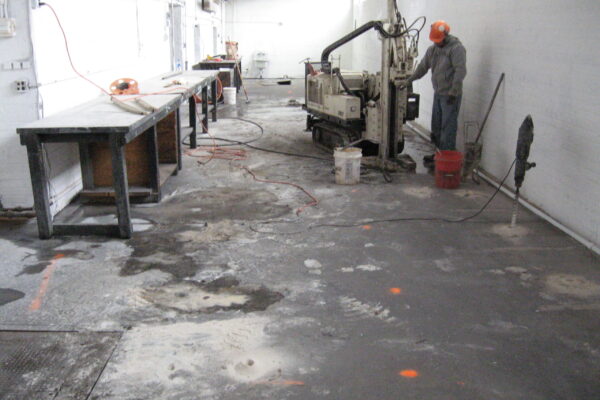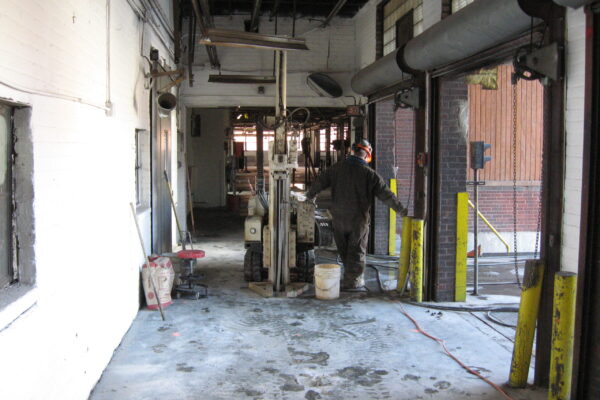Client: Former Printing Facility | Location: Chicago, IL
Pioneer conducted environmental site assessment services for the redevelopment of a former printing facility for the purpose of obtaining closure from the state regulatory agency. Petroleum-stained soils were identified in the vicinity of two heating oil USTs that were previously abandoned in-place below the basement of the existing structure. Total Petroleum Hydrocarbons (TPH) were identified at levels above soil attenuation capacity values. Thus, remediation was necessary to reduce the concentrations of TPH in order to obtain closure. Because the area of impacted soil was located underneath the building and adjacent to the building foundation, the abandoned USTs could not be removed to allow access to the soils. Based upon Pioneer’s recommendation, the property owner elected to conduct in-situ chemical oxidation (ISCO) with enhanced biodegradation using the BIOX® Process.
The treatment zone consisted of an irregularly shaped area of approximately 2,856 square feet and extended to 12 feet below surface grade (BSG). The area was treated by injecting almost 5,000 gallons of treatment solution into 180 injection points over 9 days. Although the remedial design specified a reaction period of 90 days to achieve the remediation goals, the client requested an accelerated timeframe for completion and a 30-day monitoring approach was implemented to evaluate the progress of treatment.
Although the 30-day results indicated progress, the property owner discussed the possibility of an additional injection to expedite the remediation process. Pioneer explained the benefits of allowing the remaining 60 days of treatment to proceed to reach its full design potential. By the end of the three-month monitoring period, no identified TPH concentrations remained at levels above the default soil attenuation capacity values. Without having to perform an unnecessary supplemental injection, the property owner was spared unnecessary costs based on our advice and expertise. The facility was subsequently redeveloped as a USPS facility, and a No Further Remediation letter was issued for the site.

